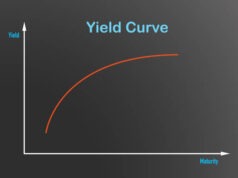
When most people think about the concept of innovation, they picture a revolutionary idea born out of nowhere that upends traditional models. While this notion might apply to a few popular ideas, most innovation in business, tech and investing comes from borrowing an existing idea from an adjacent space and refining it.
A startup called Masterworks has changed the way retail investors view art investing. As a fractional investing platform, Masterworks is an example of true innovation in a sector that has long needed a shakeup. However, the seeds of Masterworks’ business model can actually be found in the real estate sector.
By refining a few critical concepts present in real estate investing, this innovative company has transformed art investments. Here are three critical concepts that the team behind Masterworks borrowed and refined from real estate.
Fractional Share Purchases
Fractional investing has long been a part of the real estate investment world. Even before the launch of online REIT or eREIT platforms, timeshares and syndication have been staples in real estate investing.
A syndicate involves one managing partner and several general partners pooling funds to purchase a property. The syndicate realizes profits by either selling the property or holding onto it for rental income. The issue is that these opportunities are available only to qualified or accredited investors, as defined by SEC rules. Real estate crowdfunding platforms and “mezzanine structures” for shared investments became popular in the early days of fintech marketplaces.
That’s where Masterworks’ refinement enters the picture. Masterworks borrowed the fractional investing idea, applied it to art, and democratized access by using the SEC’s Regulation A. In recent years, the SEC has updated Reg A rules following the rising popularity of equity crowdfunding.
Masterworks leverages Reg A by securitizing paintings, issuing shares to investors for purchase, and publishing price fluctuations. This gives investors an easy way to access lucrative opportunities in an easily understood format. Reg A’s implications affect Masterworks in many other ways. The law allows companies to advertise and solicit funds for investment, practices that are tightly controlled and monitored in non-Reg A securities.
Masterworks can thus publicize its efforts and spread awareness of its opportunities to larger audiences. This twist to existing real estate fractional investing has boosted Masterworks’ profile in the art finance vertical, helping it democratize access to investments that had historically only been available to high-net-worth investors.
A Secondary Market to Solve Illiquidity
Like many alternative asset classes, real estate investments are notoriously illiquid. It’s one of the reasons no one tracks real-time prices of real estate assets. After all, a property’s value is equal to what someone will pay for it, irrespective of what the seller thinks it’s worth.
In parallel, no one sells a fine art painting a few seconds after buying it, since the commissions and fees outweigh any minor price fluctuations. There is no real-time database of artwork prices to justify such a sale either. In short, once you buy a piece of art or property, you’re probably stuck with it for a while. This isn’t a bad thing, since real gains take time, especially for higher priced asset classes.
However, this dynamic locks investors into a position they cannot get out of even in an emergency. Real estate investors noticed this problem and fixed it by transacting in peer-to-peer markets. Sellers and buyers within closed networks can transact and agree on prices to help investors exit and enter seemingly closed opportunities.
The art world doesn’t have these types of networks, given that most buyers hold onto their paintings for decades and usually sell them behind closed doors or through an auction. Masterworks uses its securitization structure to give retail investors a secondary exit, should they wish.
Investors who don’t want to hold onto their shares until an exit can sell their shares on the secondary market populated by other Masterworks investors. Platform community members can name their own share prices on paintings, and other community members can purchase these shares if they find the terms attractive enough.
This secondary market is unique in the art world. Masterworks’ popularity ensures a high volume of investors populate its secondary markets, which goes a long way towards solving illiquidity issues.
Using ‘Comps’ to Identify Opportunities
The idea of a comparable or “comp” is central to real estate investing. Each property is unique, and appraising it is challenging. Even if a property’s square footage is the same as another’s, its exact location, layout, number of rooms, and facilities mean valuation isn’t the same.
Real estate agents use comparables to estimate sale prices. They track sales of roughly similar properties in a zip code and use that to inform valuations. Far from an exact science, comps often involve mixing and matching to account for a property’s unique characteristics. Some real estate appraisers use “repeat sales” data to assess investment performance potential, tracking the sale price of the same property over time.
The art world has long faced a similar problem. Artwork is even more diverse than real estate, and appraisal is highly subjective. Art experts have long held sway in this realm, and this is a problem for ordinary investors who lack access to advice from insiders. Masterworks’ data-backed approach has the company tracking repeat sales of the same painting by one artist to estimate the value of another painting by the same artist. While this process is far from foolproof, it gives investors a logical basis from which they can make a decision.
This data-backed approach is unique in the art world that notoriously lacks publicly available sales data. Masterworks’ hard work in building its price database is paying dividends, and investors are reaping the fruits.
Borrowing and Refining
The roots of Masterworks’ innovation lie in the real estate sector. However, the company has refined those characteristics for the art world and has opened a new asset class up to retail investors. The results of this work are plain to see and will likely continue well into the future.


































